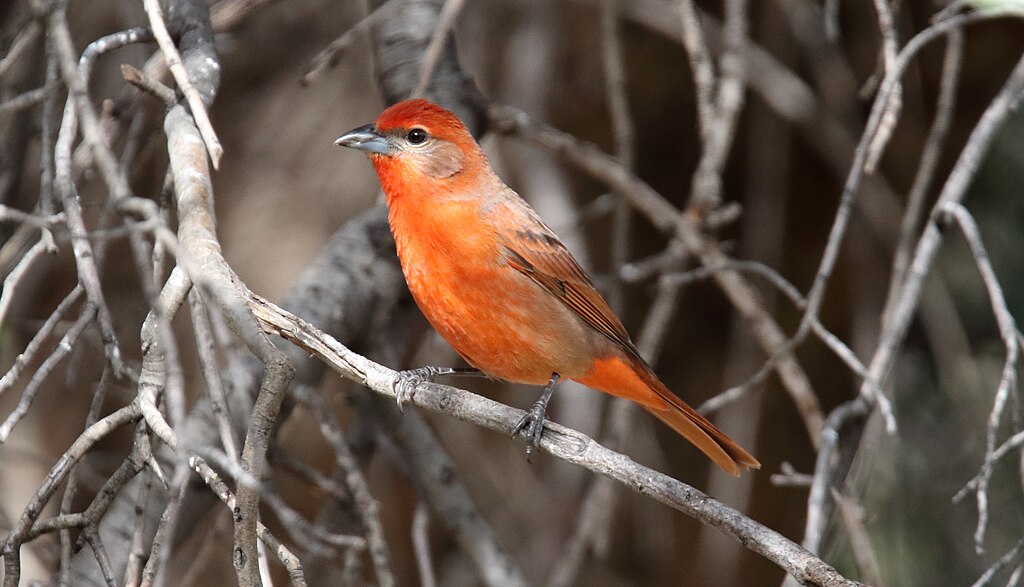Whether you live in or plan to visit Southern California, there’s a birding hotspot right here in Big Bear Lake. On the Pacific Flyway route, one of the major routes for migrating birds in North and South America, Big Bear Lake offers many of the perks that birds love: a high elevation, a major water source, and thousands of acres of pristine forest. Home to more than 250 bird species, many of them rare, Big Bear Lake is the place to see them. So get your binoculars, field guides, and birding checklists ready, and you just might see any number of these rare bird species on your next trip up the mountain.
- New to birdwatching? Here’s how to start in 3 simple steps.
- Are you an expert birdwatcher? Try these advanced birder challenges.
- Got a young naturalist at home? Here are some tips for little birders.
Rare Birds at Big Bear Lake
Bald Eagle

Though Bald Eagles were delisted as an endangered species in 2007—in fact, their population is increasing—they remain on the endangered list for the state of California, and are still a rare sight. And, while Bald Eagles are found across the US, as well as Canada, Alaska, and Mexico, Big Bear Lake has the largest year-round population of these magnificent raptors.
If you’re planning on heading to Big Bear Lake to spot some Bald Eagles, be aware that certain areas where you can typically view these majestic birds, like Grays Peak and the Grout Bay Picnic Area, are closed during nesting season. (This protects the eagles from human activity, as disturbances can cause eagles to abandon their nests, eggs, and young eaglets.)
Closures in the area typically last from winter until spring, and sometimes as late as summer; this year, Grays Peak and Grout Bay Picnic Area are closed until July 31st. You’re welcome to come and see the eagles in late summer or fall though. And, in any season, you can watch our most famous mated eagle pair, Jackie and Shadow, along with any eggs or hatchlings, on the Friends of Big Bear Lake live nest cam. March 2024 update: The mated pair laid three eggs in late January of this year, so keep watch for some egg-citing live updates!
Spotted Owl
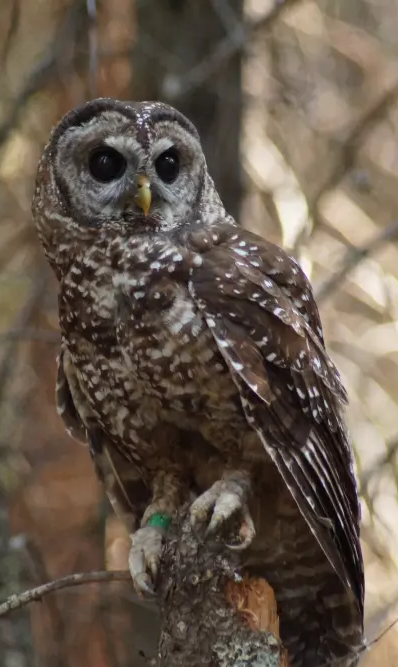
Just recently added to the Endangered Species list, the California Spotted Owl is a special treat for birdwatchers. A year-round California resident, the Spotted Owl can be found locally, nesting in cavities, broken tree trunks, and abandoned nests of mature trees. At night, they’re expert hunters, soundlessly swooping down to pick up rodents, squirrels, bats, and other small animals.
Though considered a rare sighting, Spotted Owls are worth a peep if you can catch them hunting at night. Just listen for their telltale hoots—typically a series of four notes ending with a high-pitched last note. In addition to this vocalization, Spotted Owls also have 12 other known calls.
Mountain Plover

A pint-sized shorebird with a cool nickname—“Prairie Ghost”—the Mountain Plover uses its natural coloring to disappear into the grass when a threat is near. This long-legged, sandy brown bird hunts its “prey” of insects by racing toward a spot, scanning the ground, then plucking the insect from its dirt home. Though named a shorebird, the Mountain Plover’s natural habitat is actually dry land: short prairie grass, to be more specific. You’ll find them in open ground, on plains and fields, during winter in Southern California, as well as in Nebraska, Montana, North and South Dakota, and Colorado. Because these birds are hard to find, we can’t promise a Mountain Plover sighting at Big Bear Lake. But we can promise many other exciting bird encounters on one of Chirp’s guided Bird Walks…and you just never know.
Olive-sided Flycatcher
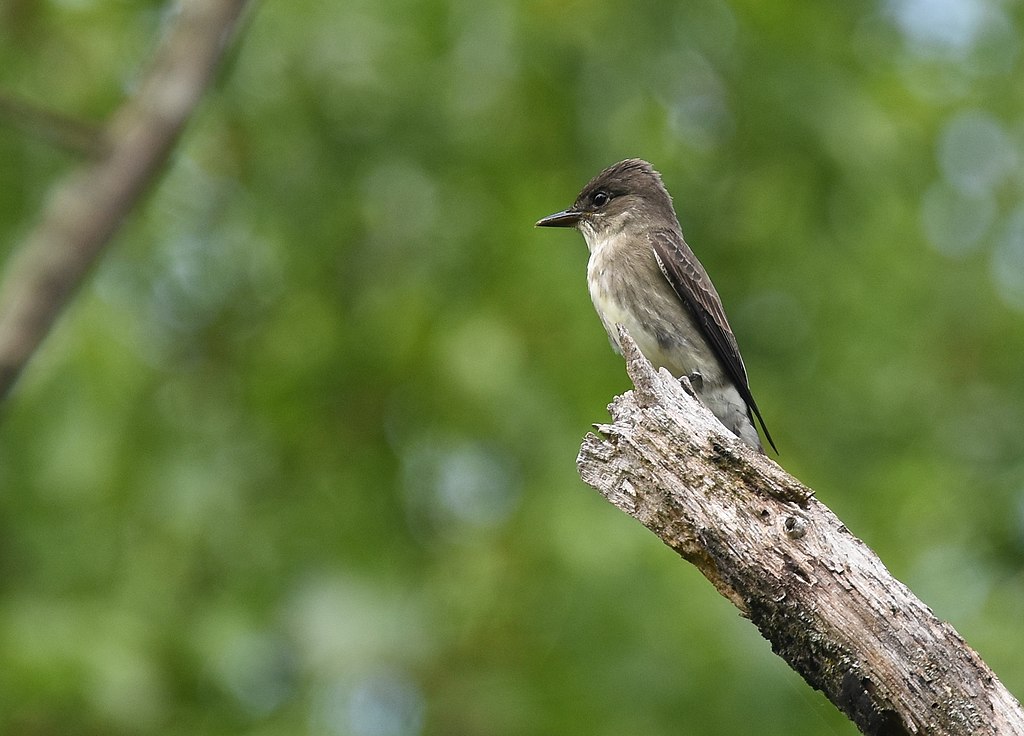
Just a tad larger than a sparrow, the Olive-sided Flycatcher sports an especially large bill for its size; a bill perfect for catching flies and other insects. Known to perch on the tops of tall trees, these flycatchers can also be seen in meadows, and near rivers and streams around Big Bear Lake in early May to late August. And though their population is in decline (they’re on the Yellow Watch List for birds, meaning they’re vulnerable), you are more likely to see them at Big Bear Lake and other high-elevation forests in mountains. You’ll know them by their distinctive “pip-pip-pip” call, and see them chasing rivals away from their nests at high speeds (they’re very territorial).
California Thrasher

A slender, downcurved beak is the most distinctive identifier of a California Thrasher, which is a large songbird known for its zealous singing. Look for them a little closer to the ground: on tops of shrubs and foraging through leaf piles for tasty insects. But as the early bird catches the worm, you may find more luck seeing these songsters in the early morning. And if they see you as an intruder, expect to see their raised tail running off into the closest brush. Though common across California, this thrasher is nevertheless a rare bird elsewhere, so it’s a real treat to spot them digging in the dirt for some fat insects.
Pinyon Jay
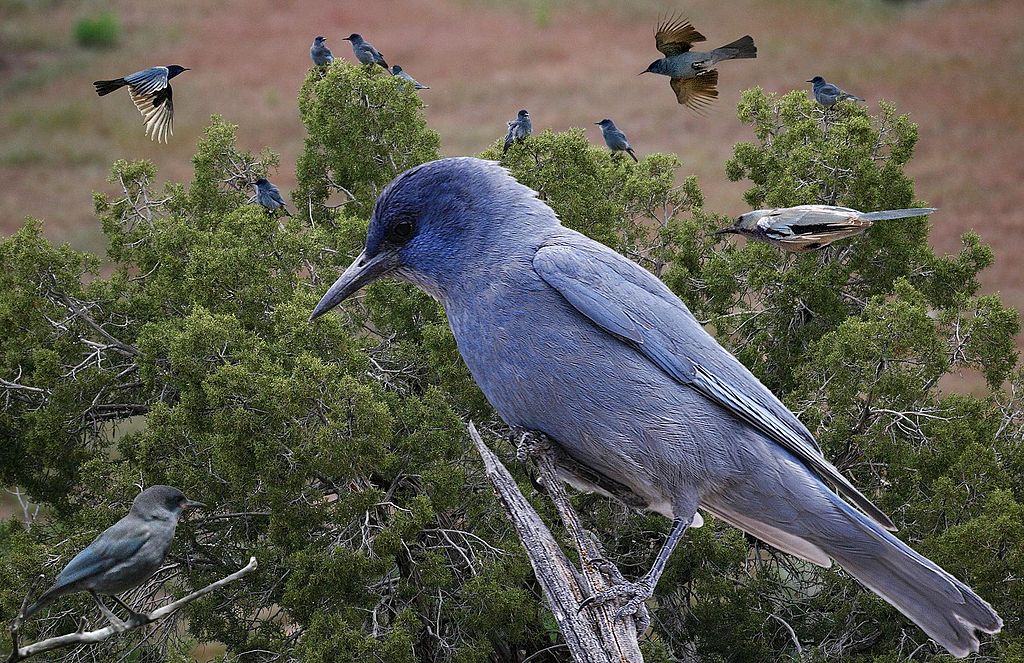
An astonishing azure blue, the boldly colored Pinyon Jay can be found scouring for pine seeds in woodlands and chaparral across the Western states. Thankfully, their noisy vocalizations (crow-like cawing) make them easy to find by sound, though you’ll have to head to a high vantage point—or invest in a good pair of binoculars—to spot them on pine tree tops. You can also attract these corvids (yes, they are in the same intelligent family as crows and ravens) by filling your bird feeders with seeds, suet, peanuts, and corn.
More Rare Birds to Spot at Big Bear Lake
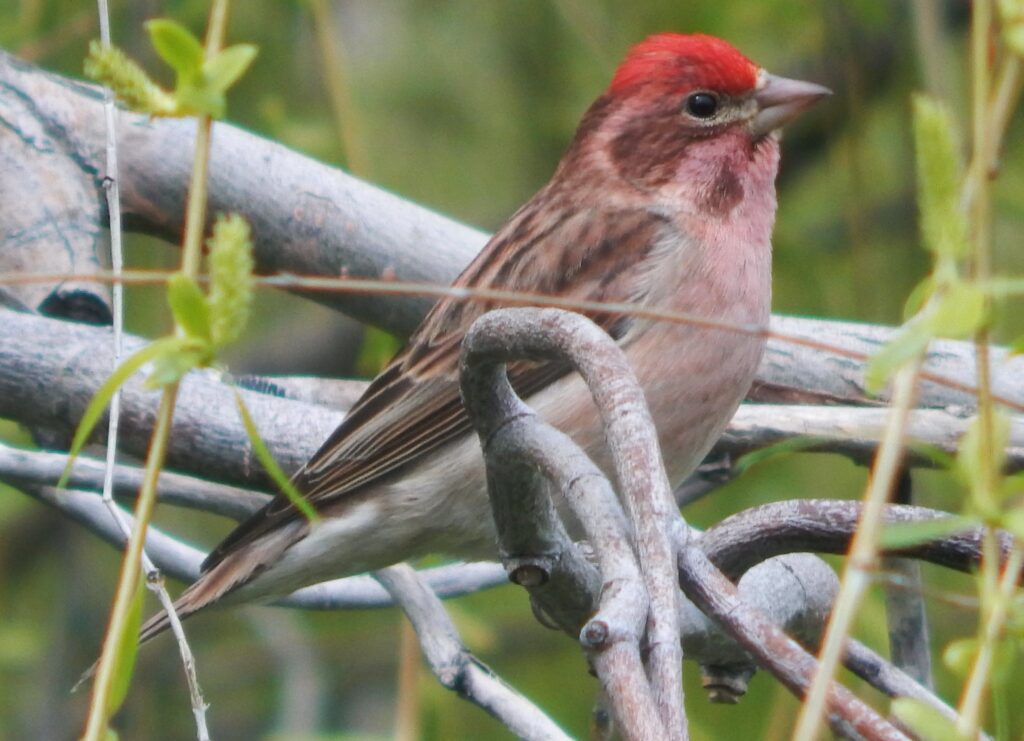
- Cooper’s Hawk
- Merlin
- Long-eared Owl
- Northern Pygmy Owl
- Northern Saw-whet Owl
- Flammulated Owl
- Yellow-billed Loon
- Lesser Black-backed Gull
- Common Snipe
- Mexican Whip-poor-will
- Black Swift
- Gray Vireo
- Painted Redstart
- Hepatic Tanager
- Cassin’s Finch
- Lawrence’s Goldfinch
For a more detailed list, view or download our Wild Bird Checklist for the Big Bear Area.
Don’t Miss This at Chirp

Spring is officially here and there’s so much to do! In case you’ve missed it, we have a ton of exciting things at store at Chirp. Here are some events to put on your calendar:
Join us for a Bird Walk
Starting in May, on every second Saturday of the month, we are hosting a free, guided birding tour at one of Big Bear Lake’s best birding locations. Our 2024 Bird Walks list has all the details.
Get a seed subscription
Did you know that Chirp now delivers bird seed right to your door? Subscribe and save—choose from monthly, 6-months, 9-months, or custom subscription plans.
Fill up at our refillables station
Reduce or eliminate single-use plastic and try some natural and nature-friendly brands of personal and home care products when you stop by the Chirp store’s refillables section.
Try our new bird-friendly coffee
Start your day with a cup of Joe that is organic, shade-grown, and doesn’t disrupt bird habitats. Light, Medium, Dark—we have all your favorite roasts to choose from.
Mountain Plover photo courtesy of Ron Knight. Olive-sided Flycatcher photo courtesy of Andy Reago & Chrissy McClarren. California Thrasher and Hepatic Tanager photos courtesy of Dominic Sherony. Pinyon Jay photo courtesy of Richard Crossley.

